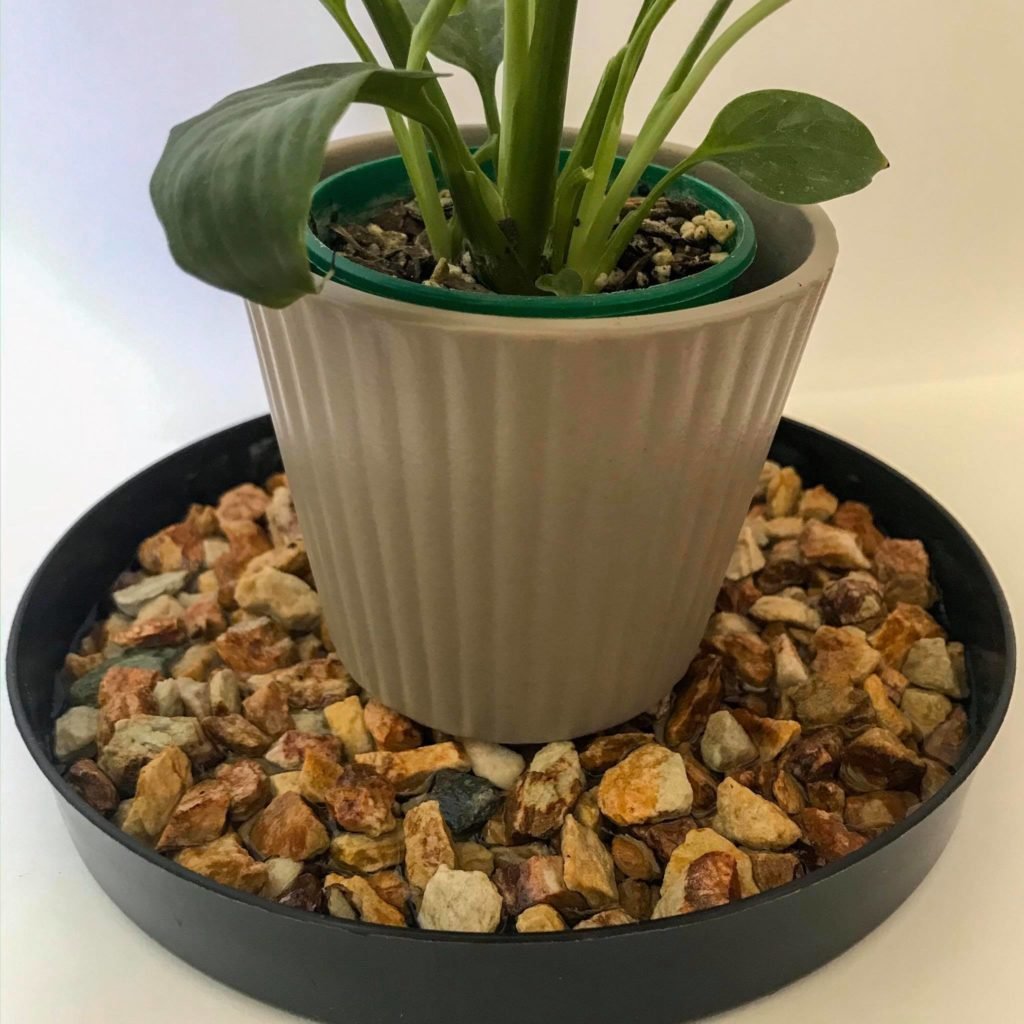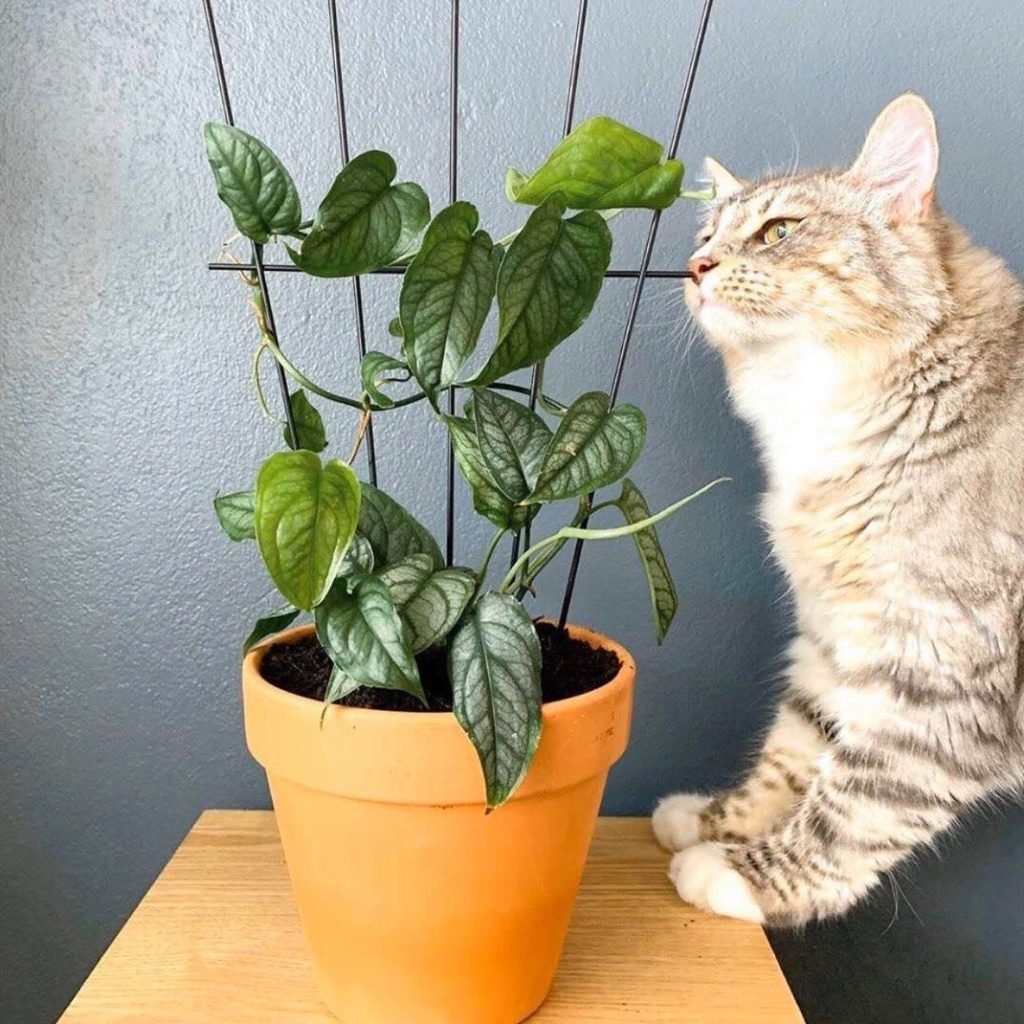Fungal infections can be a plant mum (or dads) worst nightmare with fungal related diseases causing poor plant health, so we’ve found three of the best fungicides for houseplants and how to use them. If your indoor plants have shown any of the following symptoms you may have a fungal infection problem;
- Black or discolored patches at the plants stem
- Grey moldy patches
- Brown, dead patches on foliage and stems
- White films (similar to icing sugar on donuts)
- Brown rings & spots on foliage (commonly rust)
If your house plants have displayed any of these symptoms, its time to solve the issue and prevent it from occurring again. Now you’re thinking “how do I get rid of plant fungus?” well don’t worry, we will go through below the best ways to do so including; chemical fungicides, organic fungicides & home remedies.
Chemical Fungicide Option
Pros
| Water Proof formula |
| Multipurpose (can be used on other plant varieties) |
| Effective against major plant diseases |
| Money Back Guarantee |
Cons
| Concentrate bottle has to be diluted |
| Hazardous to humans & domestic animals |
| Application lasts 2 weeks |
For our chemical indoor plant fungicide prevention and cure option we suggest using Immunox Multi Purpose Fungicide Spray. This fungicide is multipurpose and can be used on not just house plants but; flowers, roses, fruit & nut trees, vegetables and lawns. It is effective against Black and leaf spot, Powdery Mildew, Rust and various other house plant diseases.
This Fungicide is great especially if your house plants are exposed to the elements as it is ‘rainproof‘. This means that it won’t wash off if exposed to rain (or water from a watering can). Spectracide also offers a money back guarantee if their product doesn’t produce the guaranteed results, which gives you peace of mind.
Application
The Immunox Multi Purpose Fungicide Spray comes as a concentrated formula so will need to be diluted in order to apply to your affected plants. The suggested dilution rate is at a ratio of 1:128 therefore the 16 fl oz Immunox Multi Purpose Fungicide Spray bottle can make 16 gallons of treatment solution (2 tablespoons to approx 3.8 litres).
The next step is to choose an application method for your indoor plants. Place the correctly diluted mixture in a spray applicator. These include; pump-up/ trigger bottle sprayers, dial -style hose end applicators or concentrate plus water style sprayers.
Ensure to spray the targeted house plants with the diluted solution until the solution begins to run off the leaves. Ensure that you allow the applied fungicidal solution to dry prior to watering, otherwise it will wash off and will need to be reapplied to remain effective. This also goes for rain. Therefore, if it rains prior to drying it will need to be reapplied.
If you are worried about your prized house plants, be sure to test a small area of foliage prior to a recommended full dose. This will allow you to see how the fungicide reacts with your particular plant. If signs occur that the solution is harming your plant do not continue use, this goes for all brands of fungicide.
Frequency
Once applied your Immunox Multi Purpose Fungicide Spray application will work effectively against diseases for up to 2 weeks. After this period if symptoms persist continue application at recommended dosage rates. This can also be applied as a preventative on a fortnightly basis.
Notes:
Remember when using any measuring devices/ spoons/ bottles to mix or measure chemical fungicides do not use those utensils for food purposes afterwards.
Wash hands with soap after applying spray and after touching plants that have been treated on that day.
Organic Brand
Pros
| 3 in 1 Spray |
| Ready to use |
| Less harsh than chemical alternatives |
Cons
| Slightly more expensive |
| Harmful to Bees (within 3 hours of use) |
| Strong odor |
If you are especially conscious about you and your family’s health and the environment around you, using an organic based fungicide is the solution for you. Fungicide 3 works great for not only indoor plants but fruit, vegetables, flowers, shrubs, trees and herbs.
Multipurpose, this 3 in 1 garden spray not only fights fungal related house plant diseases but also can rid your plants of insects and mites with its insecticide and miticide properties. This is all thanks to its active ingredient neem oil. If you want to find out more about oils and how they can aid house plants checkout ‘3 essential oils for keeping mites at bay‘.
Fungicide 3 is effective against the following house plant diseases; “powdery mildew, black spot, downy mildew, anthracnose, rust, leaf spot, botrytis, needle rust, scab, flower, twig and tip blight, and alternaria“*.
This product is organic certified and listed by the Organic Materials Review Institute and can be used up to the date of harvest if used on fruits, vegetables or herbs.
Application & Frequency
Unlike the Immunox brand fungicide concentrate the Gardensafe 3 in 1 Organic fungicide comes ready to use in a 24oz spray applicator bottle. The spray can be applied as either a preventative or as a treatment for the previously outlined diseases.
Regardless of using this product as a preventative or as a treatment application is the same. Use the spray bottle to apply the mixture to all surfaces of your target house plant. This includes the tops and undersides of all leaves and the plants trunk/ stems. Spray until your house plant is completely wet.
As a preventative to house plant fungal diseases you can apply as previously directed every 7-14 days. I would recommend application every 14 days, unless your house plants have a history of being prone to fungal infections. If your indoor plants are prone and no disease is currently present, apply between 7-10 days to be safe.
As a measure of disease control for already present fungal diseases ensure to apply fungicide 3 every 7 days until disease is visibly eliminated. After this you can resume to using the spray as a preventative to stop the infections recurring.
Be sure to test the spray on a small section of each house plant before applying a complete application. This is to ensure your plant isn’t going to negatively react to the spray. Also be sure to apply spray when temperatures are not too hot (below 90F) or in the shade, as it is oil based and can burn leaves.
Notes:
Although this product is organic it can still cause irritation to the skin and eyes. Ensure that you wash hands properly after use.
Bee Warning: We love bees and want to ensure their survival! This product is harmful to bees if they are exposed to direct treatment. Ensure that your house plants are clear of bee activity prior to use.
Home Made remedies
If you are unable to make it to the shops or prefer to try some home made fungal remedies before opting to purchase fungicides, you can try the following method.
Baking Soda Method

Baking soda is a safe, gentle solution when it comes to removing indoor plant fungal infections. Also known as sodium bicarbonate, baking soda is a non-toxic, human (and pet) friendly anti-fungal agent.
The best part about using a baking soda is that it is probably already in your (or your grandma’s) cupboard waiting to be used. Baking soda is known to be effective against house plant fungal diseases such as powdery mildew and types of black spot.
Spray Contents
Making an fungicidal spray with baking soda as the active ingredient is simple. All you will need is;
- A clean Spray Bottle
- 1 Teaspoon Baking Soda
- 1 Quart (litre) of Water
- Liquid soap
Place the water and baking soda into a clean spray bottle and either stir until dissolved or place the cap onto the spray bottle and shake until dissolved. Then add 3-4 drops of liquid soap into the bottle and mix again using your preferred technique. The liquid soap in the mixture assists the baking soda solution stick to the plant.
Application
Once you have completed making your baking soda fungicidal solution its time to apply it to your affected plant. To do so you will need to have your spray bottle set to a misting setting in comparison to a jet. This allows a wider spread of the solution and more accurate coverage.
Begin spraying your house plant from top to bottom ensuring you get both sides of the leaves. Allow your plant to dry and let sit for at least 24 hours before re-application. If the fungal disease is still present on your house plant 7 days after your first application it is time to consider a stronger fungicidal approach.
Additional Information
Your left over baking soda fungicidal solution can be stored in the spray bottle for future use. Ensure you shake the bottle of stored solution to allow it to mix evenly before use.
Prolonged use of baking soda solution can lead to a build up of baking soda in your house plants soil within its pot. In extreme cases this can cause stunted growth of your indoor plant.




